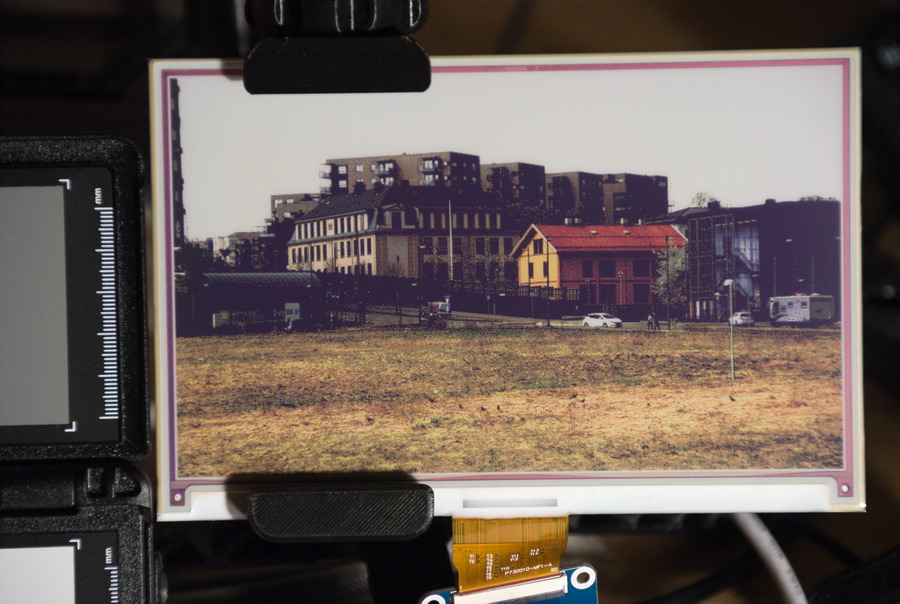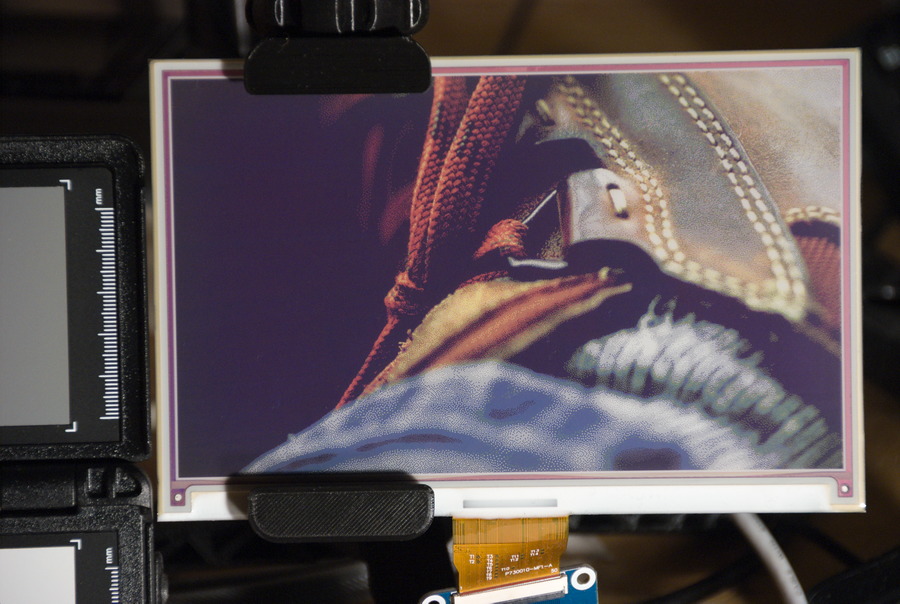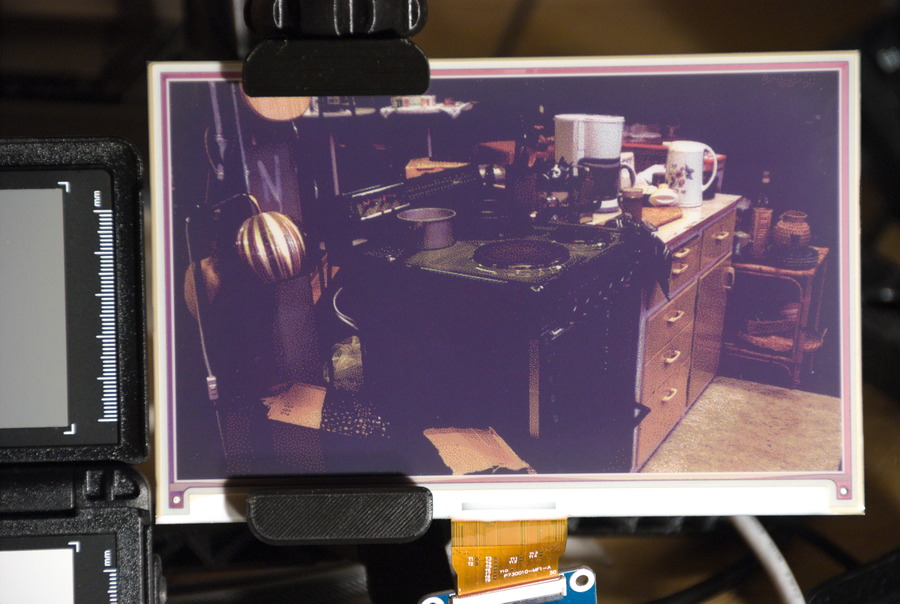Photo-Epaper
I put colour photos on
electronic paper,
as good as possble, and good enough.
E-paper displays use no energy, except a tiny bit when changing their image.
Advantages of my system:
More accurate colours. Thus making portraits practical, with skin tones.
Less grainy. Thus making images smoother, where originals are smooth.
Sharper. The photos on epaper can look a little bit sharper than the epaper itself.
Current conversion speed: 0.8 seconds on a modern 16 core server. 15 seconds on a Raspberry Pi 5.
Video here.
You may contact me if interested in this service.
kim.oyhus@gmail.com
Kim Øyhus, M.Sc. Physics.
The display I use here is the
"800 x 480 7-color ACeP Display" from
Eink.com
which I bought from
Waveshare.com
and
Pimoroni.com
Photos of photos on electronic paper
Model Iben
Artistic model Vilde wears no makeup
These photos are real, not manipulated. Lighting is from the side
and the camera is against a dark background. At the left is an 18%
grey reference for correct white balance and exposure.
Images were written to the e-paper at 20-25°C (68-77°F) where the
e-paper seems to give best colours. Colder, and the colours become
greyer. Hotter, and they just become weird. I can calibrate images to
other temperatures.
A car exhibition on a sunny day.
Cat. The images tend to become a little sharper than the e-paper itself with my process.
My process was quite hard to make, involving physics and heavy
math.
First, I get the original photo. It should be quite bright, without
highlights, as the e-paper has low dynamic range. The e-papers white is
somewhat dark, and its black is somewhat grey. The same goes for the
colours, which are somewhat dull, but fine if the original photo does
not use too bright colours. This is fairly new technology, and my process for putting photos on e-paper is new as of autumn 2023.
Then I translate the photo into a .BMP image to be
transferred to the e-paper. The translation uses heavy math, and some
physics. This .BMP image looks somewhat psychedelic. And finally a
python program puts the image onto the e-paper. Best if the
temperature is around 23°C (73°F) then. But it can be different after that.
And then it looks like a paper photo.
Documentation on how to use this e-paper and python programs can be found on
Waveshare.com
and
Pimoroni.com
(Pimoroni requires "Raspberry Pi OS (Legacy) Full" released 2023-05-03 )
My .BMP demo pictures for the e-paper can be found
here.
The palette of the e-paper. These are the
most extreme colours the e-paper can show. They are a little dull,
but good enough for most colour photos in practice.
These detergents show shades of white. Some
graininess can be seen close-up. The image on the e-paper is a
little bit sharper than the e-paper itself.
More photos of photos on electronic paper
Close-up of electronics.
Focus on a spring flower.
Architecture.
Motorcycle.
Shoe lace on leather boot. The leather and texture is really well reproduced.
Enjoying ice at the harbour.
Cars by the race track for horses.
Bleached ropes on a ferry.
Kitchen stuff.
Dog and human legs on natural stone tiles.

















